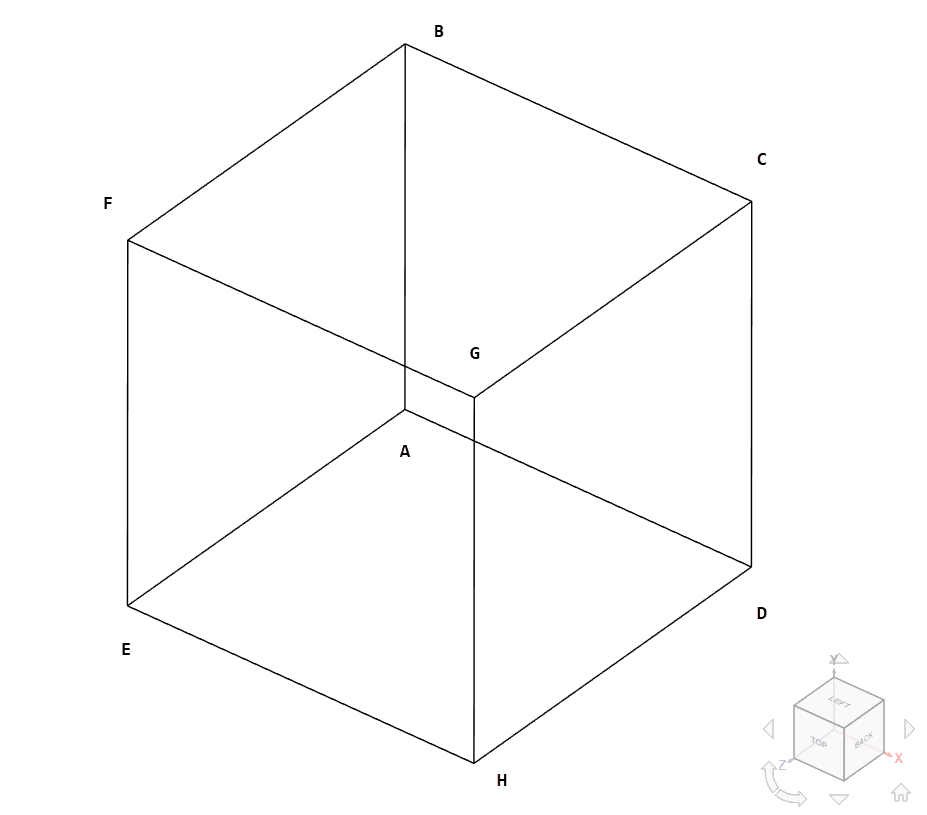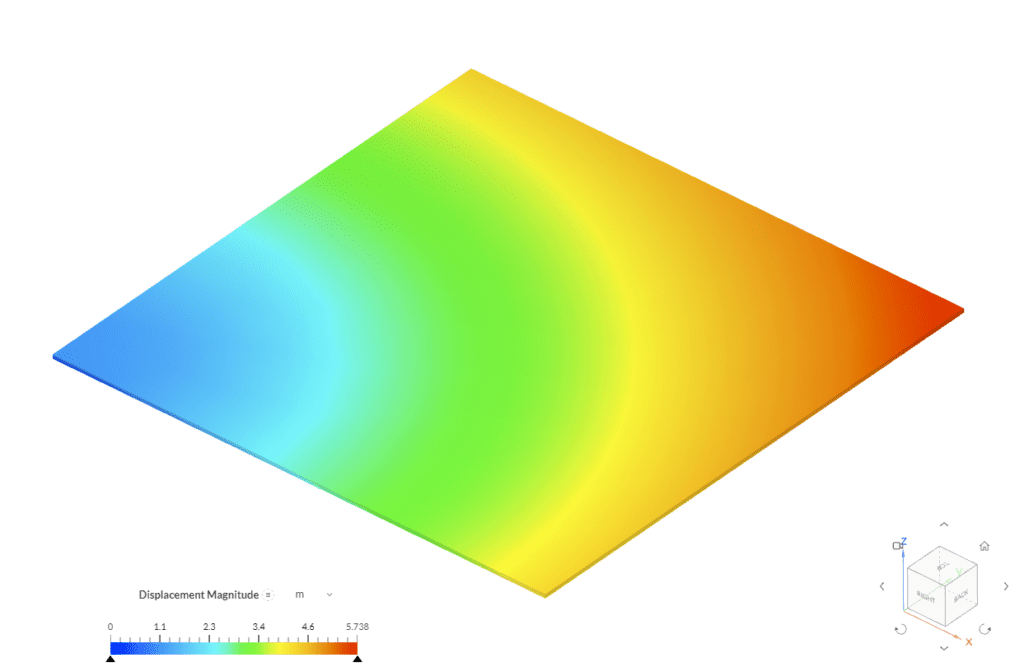Documentation
This validation case belongs to an hyperelastic equibiaxial tension test in solid mechanics. The aim of this test case is to validate the following parameters:
The simulation results of SimScale were compared to the results derived from [Treloar]\(^1\).
The geometry used for the case is as follows:

The cube has an edge length of 1 \(m\).
Tool Type: Code_Aster
Analysis Type: Static Non-Linear
Mesh and Element Types:
The mesh for the cube geometry was computed using SimScale’s Standard meshing algorithm.
| Case | Mesh Type | Number of Nodes | Element Type |
|---|---|---|---|
| All | Standard | 1184 | 1st order tetrahedral |

Material:
Hyperelasticity material, with the following parameters for each type of law:
Boundary Conditions:
The reference solution is of the experimental type and was extracted from [Treloar]\(^1\). It corresponds with the nominal stress-strain material curve. The values were extracted using WebPlotDigitizer.
Comparison of the nominal stress-strain curves computed from reaction force on the faces with zero displacement, versus the reference data is shown in Figure 3:

Following are the contours of the final deformed shape and the von Mises stress from the Signorini case results, where the hyperelastic equibiaxial tension load effect can be appreciated:

References
Note
If you still encounter problems validating you simulation, then please post the issue on our forum or contact us.
Last updated: July 28th, 2021
We appreciate and value your feedback.
Sign up for SimScale
and start simulating now